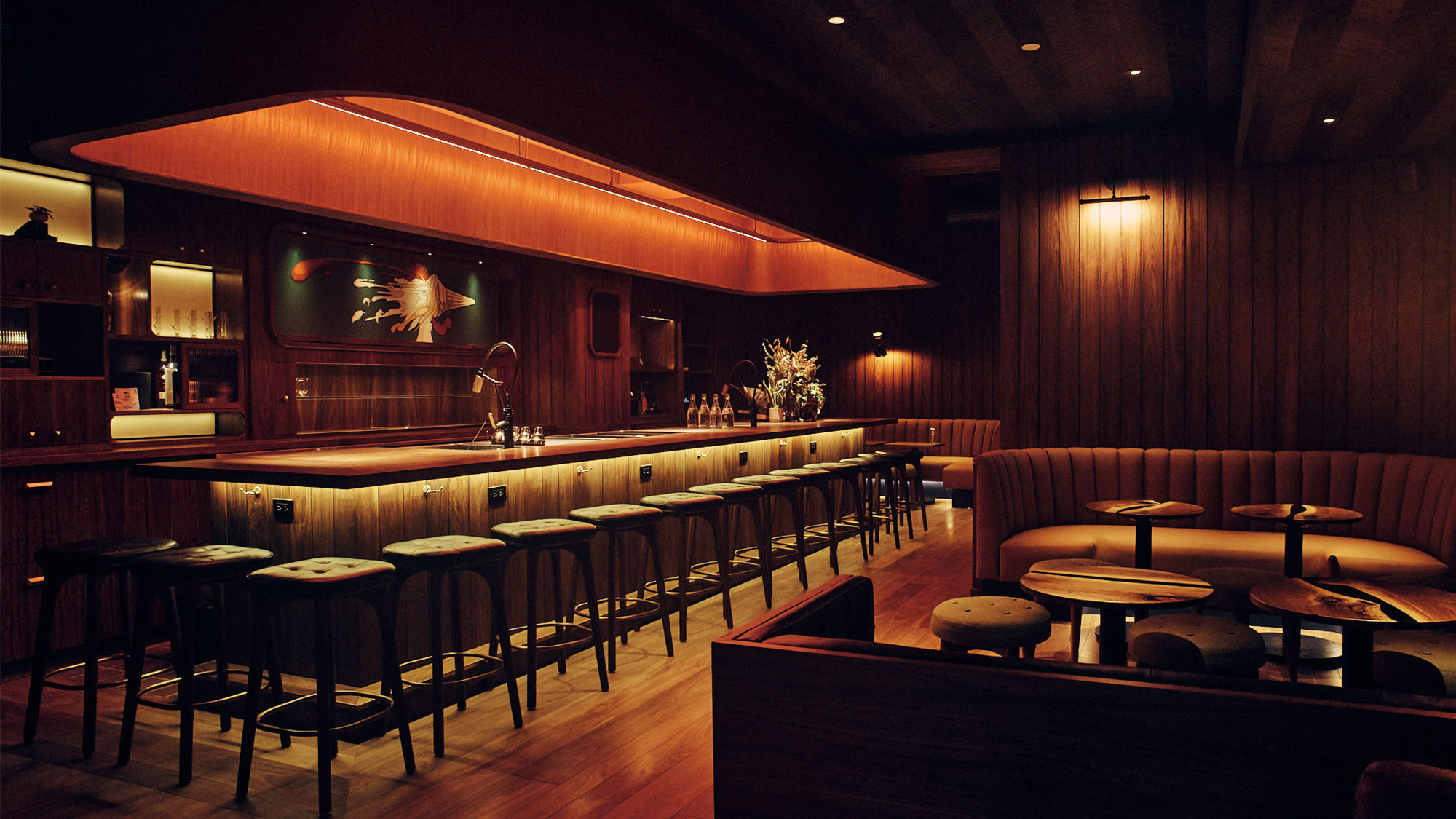
What Double Chicken Please’s Bar Back Menu Is All About, Through Five Dishes
Is it a Taiwanese chicken sandwich shop, a speakeasy small plates restaurant, or one of the city’s best and most underrated cocktail bars?
It’s kind of hard to put a label on what Double Chicken Please is all about. But according to co-founder GN Chan, that’s what makes it so fun.
“It’s kind of vague, but there’s beauty in that it could be anything. I don’t really define this place. We serve food and drinks,” he smiles.
Just not any food and drinks. What started out as a roving cocktail pop-up bar inside a beat-up yellow Volkswagen camper is now a brick-and-mortar in the heart of the Lower East Side. Anchored by cocktail mavens GN Chan and Faye Chen (previously of Angel’s Share and Shanghai’s Speak Low), Double Chicken Please was set to be a “bar bar” until they met executive chef Mark Chou through mutual friends.
“We’re more like Triple Chicken now,” GN laughs. “With Mark’s talent, we moved into a different direction with our food. But I torture him a lot: He has a fine dining background and I tell him, ‘I need chicken sandwiches.’” (They were a hit.)
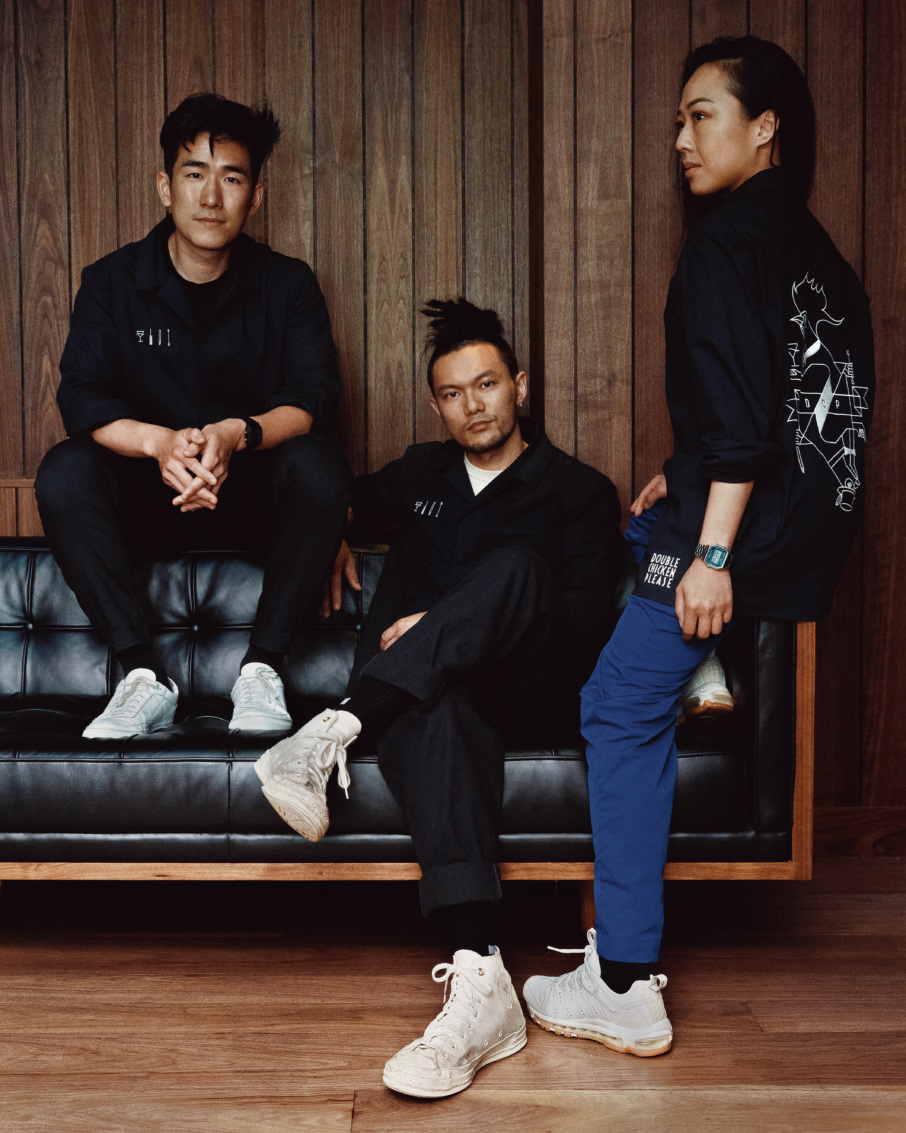
When you go, out front is where you’ll find those excellent chicken sandwiches, studded with salted duck yolk, Thai basil, and the like, alongside cocktails on tap. But it’s in the newly debuted, dimly lit back bar where the Double Chicken Please team really starts to show off their chops.
Inside this moody wood-paneled lounge, the drinks menu will make you do a double take and think you’ve opened the food menu, while the forks and knives you’re given alongside your plates look like screwdrivers. The team likes to play with pre-conceived notions and make people smile (see their wintertime cold dogs and Le Big Mac “burgers”). That whimsicality, if anything, is perhaps the best way to think about Double Chicken Please.
On the cocktail side, Faye and GN twist and turn savory dishes into delicious, well-balanced cocktails, with names like Cold Japanese Noodles, Waldorf Salad, and French Toast. There are some classic cocktails too, but the bartenders still like to have fun (Pro tip: Order the Reverse Manhattan if you’re so inclined). On the food side, Mark has built a menu of seasonal small plates that take their cues from the drinks themselves.
“That’s what’s so fun about working at Double Chicken Please: What starts off as a byproduct actually turns into a very delicious component on top of our food,” he says.
Below are three drinks — “an appetizer, a main course, and a dessert,” GN jokes — and two dishes to start to understand what Double Chicken Please is all about.
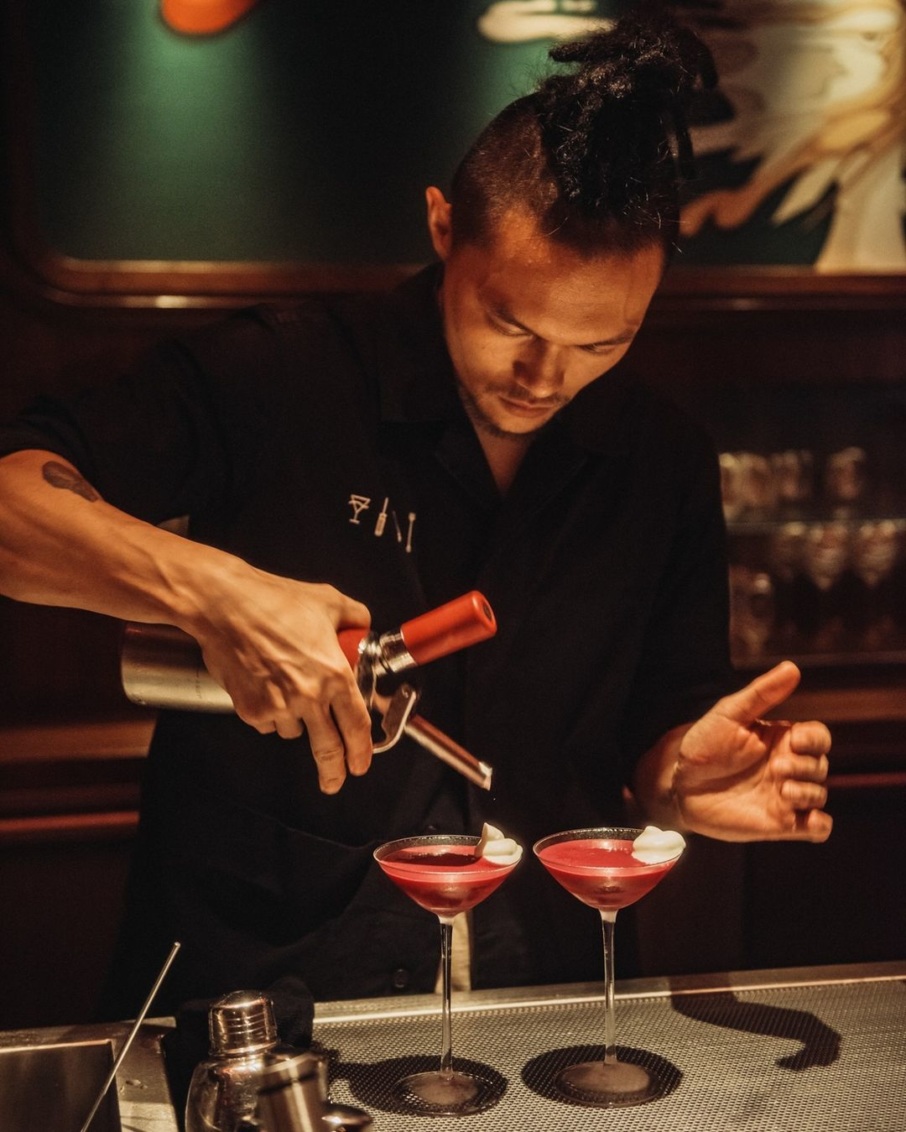
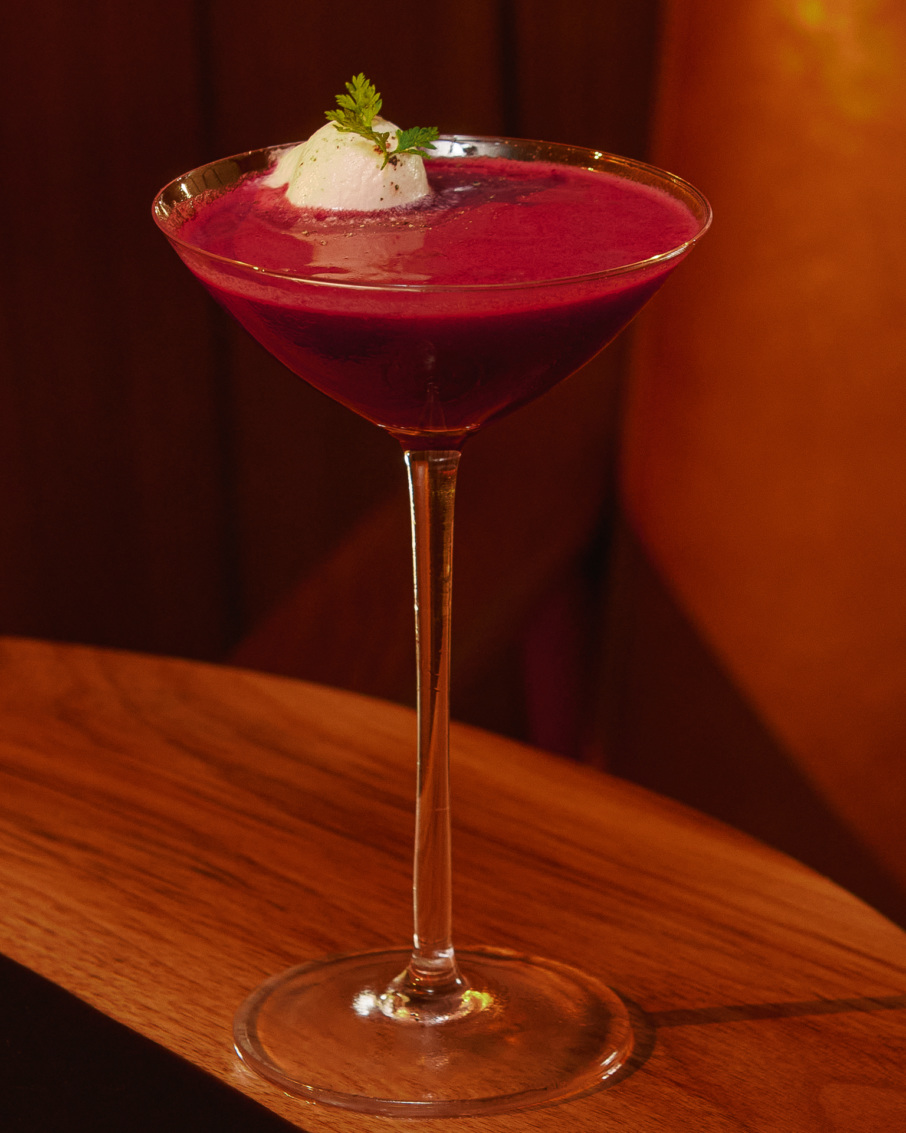
1. NY Beet Salad
(Bombay Sapphire, beet, pineapple, cranberry, mascarpone, yogurt)
GN Chan: “This is the first drink where I tried to turn a dish into a beverage. It was about five or six years ago when I was still at Angel’s Share. A lot of New York restaurants offer a beet salad in different forms, but most of the time, you get roasted beets, veggies, some yoghurt, and cheese. Basically, we just turned all of those ingredients on the plate into liquid form, blend them together, and it works: It’s earthy, refreshing, and slightly creamy. It’s a crowd pleaser. For Eastern Europeans, it tastes like borscht! It’s always one of the drinks that people drink first because it’s a refreshing way to start. This one’s easy to make, more straightforward. But it’s not always like that…”
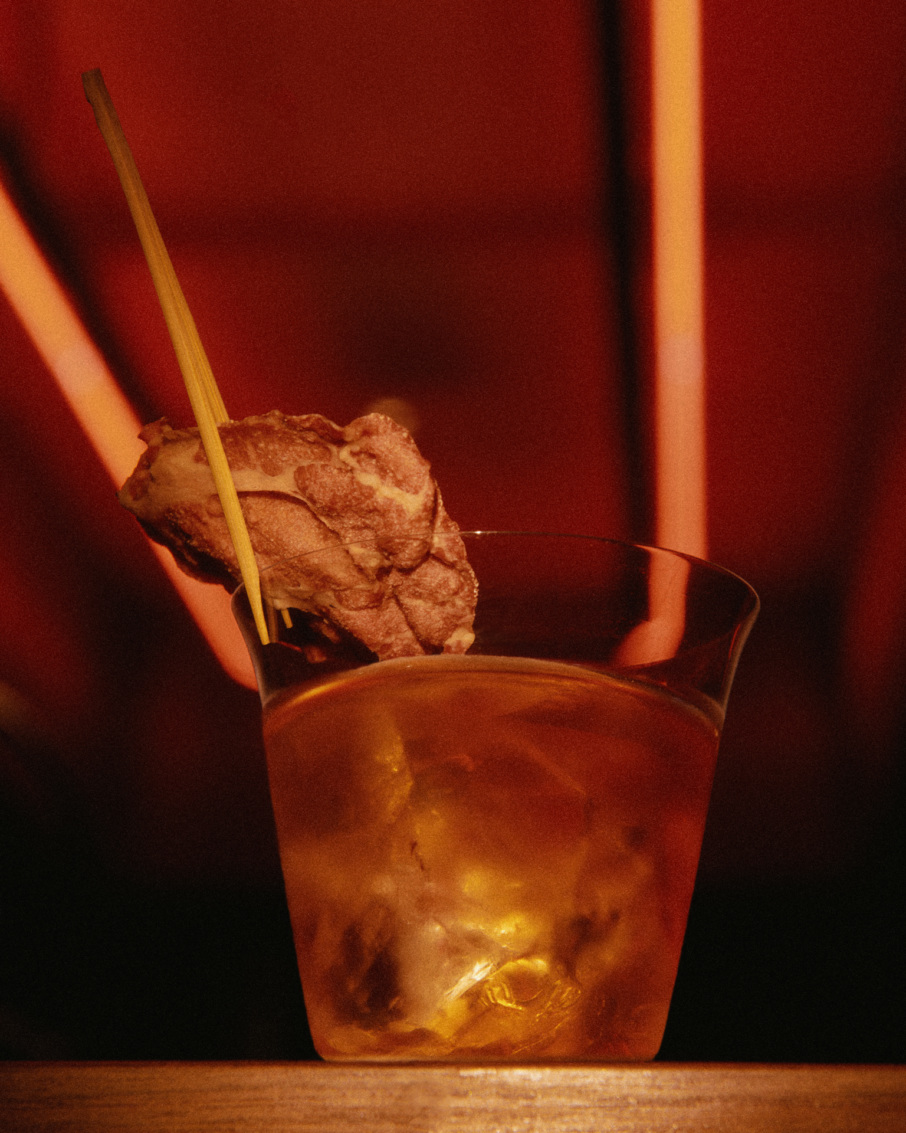
2. Red Eye Gravy
(Teeling Small Batch Irish Whiskey, coffee butter, corn, walnut, wild mushroom, microwaved prosciutto)
GN Chan: “Red Eye Gravy is more complex and more spirit-forward, like an old fashioned. Years ago, I was watching the TV show ‘The Mind of a Chef’ hosted by David Chang, and in one episode, he’s talking about red eye gravy.
Apparently, it was a 1960’s or 70’s thing in South Florida where people wake up in the morning, sear a slice of ham, put a lot of butter, a lot of veggies, and then some leftover coffee in the sauce. I was really intrigued — I never had a hot dish with coffee in the sauce. I thought it sounded really fun. So, I went to a very divey place when I was doing Tales of the Cocktail in New Orleans to try the flavor, and thought, “Wow. How can I turn this into a cocktail?”
The flavor is big, it’s really heavy and rich, so we chose the old fashioned to represent the dish. We cook dried porcini and shiitake mushrooms into a butter, then take that and slow cook it with coffee beans to get a really subtle coffee flavor. So now, you have coffee-mushroom butter, and you take it into a fat wash where it’s infused with whiskey. We chose Irish whiskey because it’s more neutral and it goes really well with butter — its high alcohol content can extract more flavors. After the fat wash, the texture changes, it’s silky. To represent the vegetable in the dish, we chose corn, which we grill and make into a brown sugar syrup. And that’s the drink.
But then, on top, we put microwaved prosciutto to represent the piece of ham in the dish. So, you take a sip, then a bite, then another sip. Once you bite into the prosciutto, the fattiness and saltiness will round out your mouth and enhance the flavor, so when you go back to taste the cocktail, the flavor of it will slowly change. It’s not exactly a food and drink pairing, but it’s a fun thing to do. Back and forth, the flavor will keep evolving and evolving.”
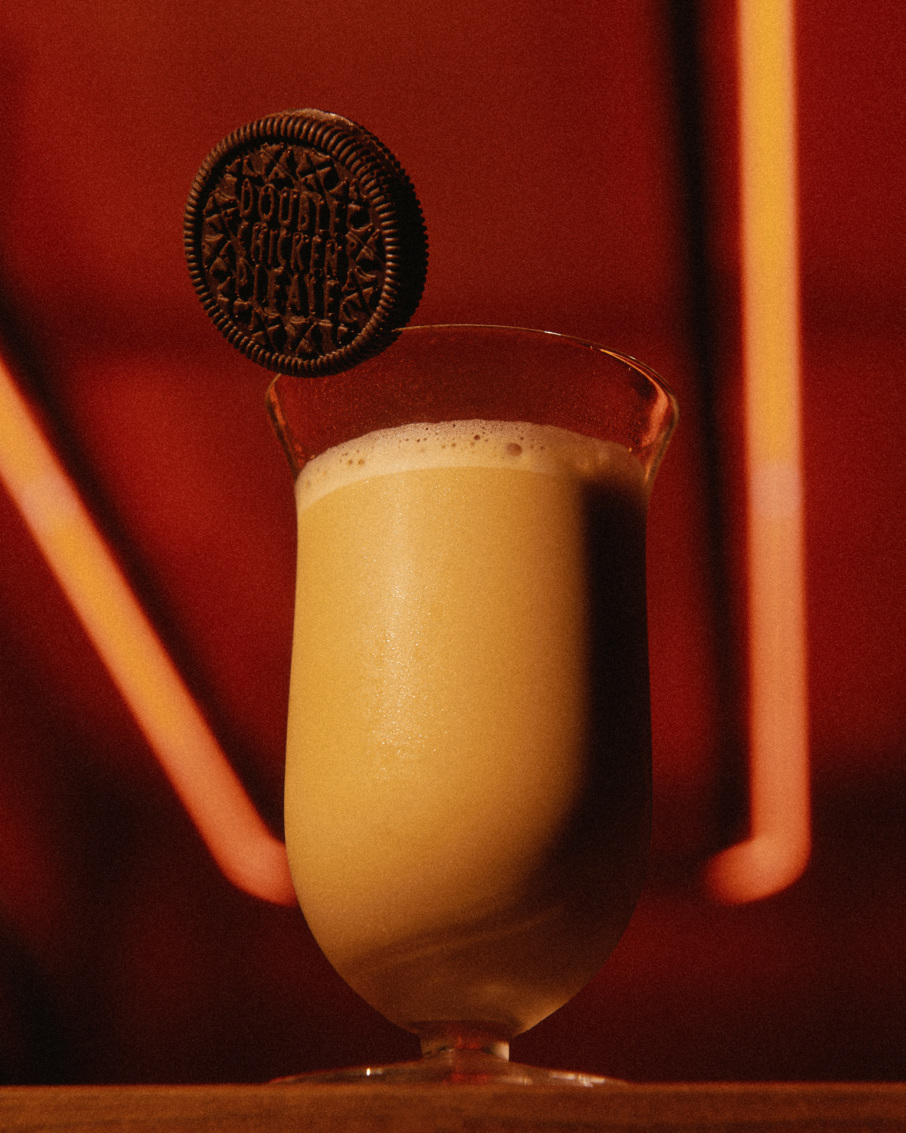
3. French Toast
(Grey Goose, roasted barley, brioche, coconut, milk, maple syrup, egg)
GN Chan: “French toast is one my favorite breakfasts, so we turned it into a dessert drink. This one is trickier, it was really hard to make, but we tried a couple of recipes and finally found that coconut (not so common in French toast) is actually a good ingredient to bind all of the flavors together. It’s really fun, almost like you’re tasting liquid burnt toast! We pair it with this ‘Oreo’ that we custom made. We designed it, 3-D printed it, created positive and negative molds, and then made a chocolate out of it. It looks like an Oreo but it says ‘Double Chicken Please’ and it tastes like an espresso martini. So, imagine you’re having breakfast, but you’re drinking your French toast and you’re eating your espresso martini! The cookie is a bit bitter, so it goes well together. You can dip it in the drink, just how you’d eat an Oreo.”
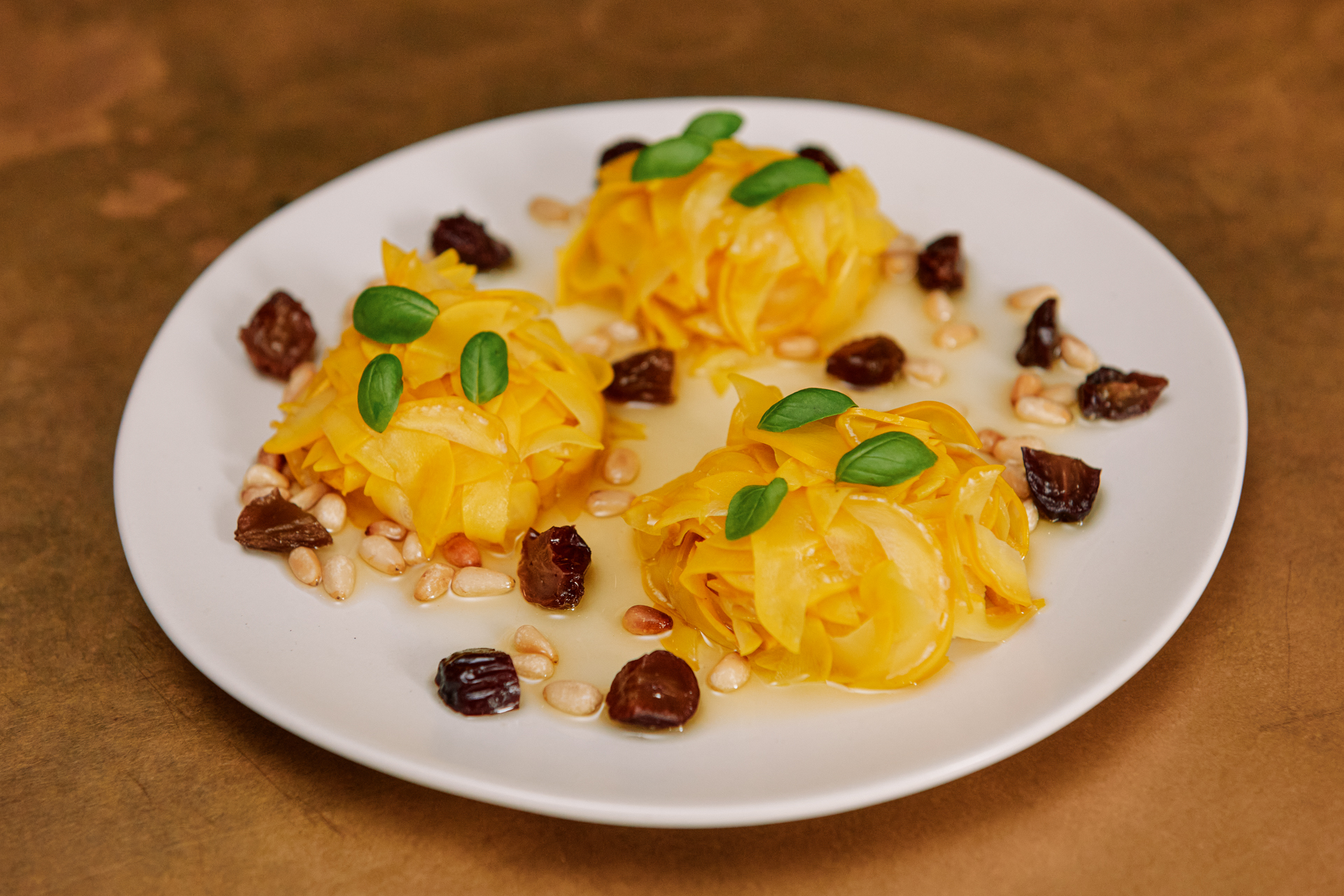

4. Gold Bar Squash Gnudi
(Toasted pine nut, brandied raisin butter, sweet basil)
Mark Chou: “For our gold bar squash gnudi, we’re using squash at its peak season in the summer. For people who don’t know gold bar, it’s almost this artificial–looking yellow that’s hyper saturated. We use that and make petals out of it — both freshly blanched and then pickled versions. We put that on top on ricotta gnudi that’s been infused with some good parmesan from Murray’s Cheese, and finish it with some sweet basil and toasted pine nuts. We use the brandied brown butter, a byproduct from the Butter Raisin Biscuit drink, where we actually rehydrate raisins from the infusion and then use that as the sweet boozy component of our dish.”
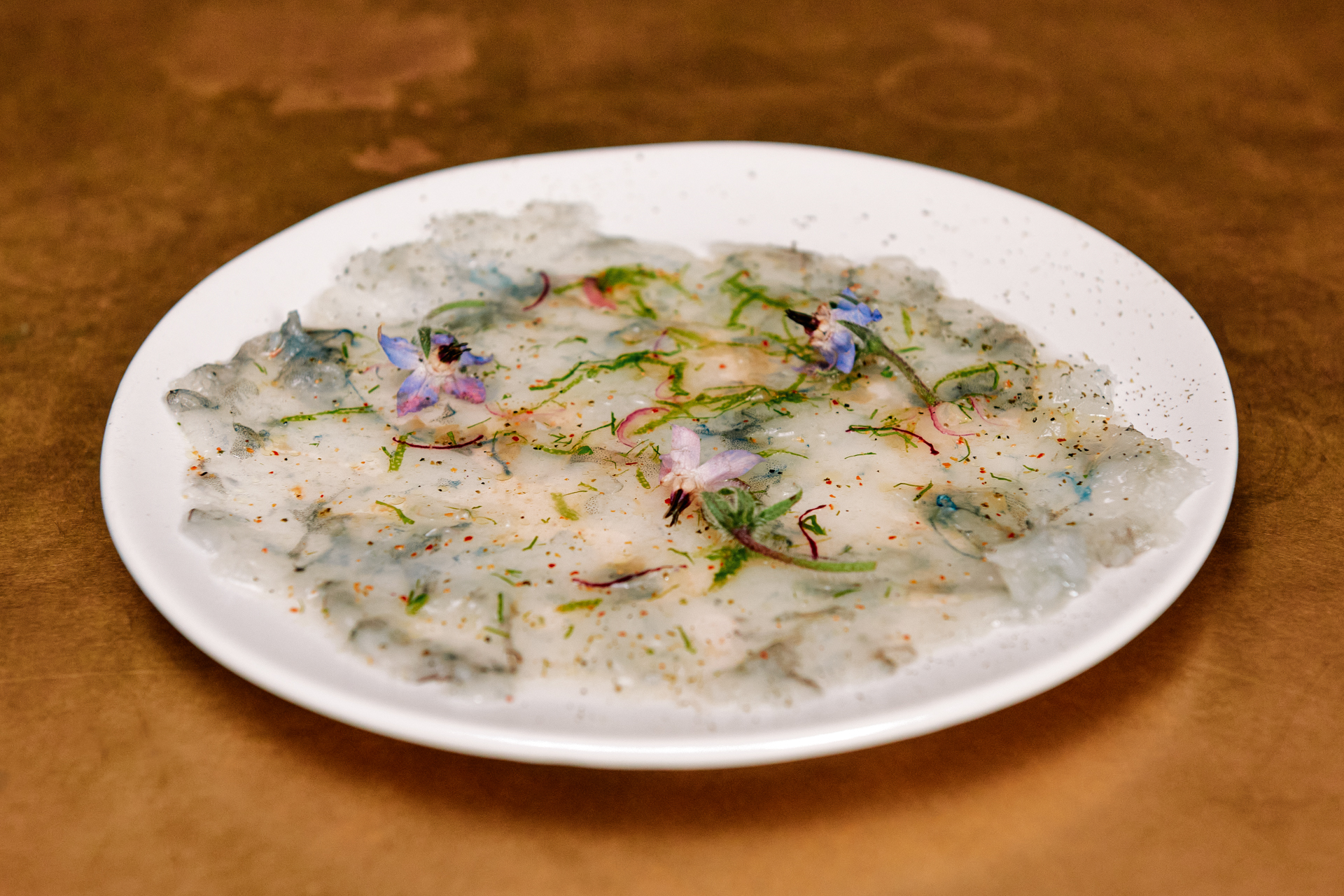
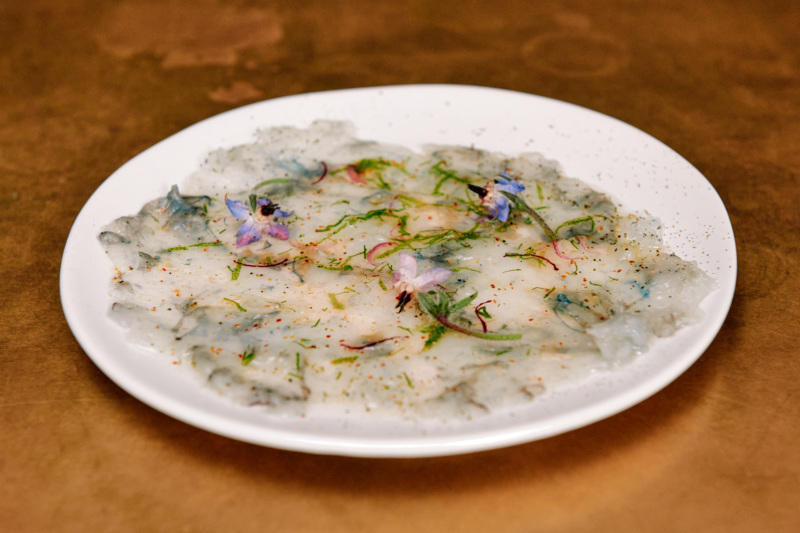
5. Blue Crystal Prawn Ceviche
+ Prawn Head Tempura
(Green Szechuan peppercorn, dashi, borage flowers)
+ (Salted duck egg, chile, lemon)
Mark Chou: “Faye, GN, and I all love seafood, and we’ve had so many iterations of this one ceviche dish. We started with scallops, but the scallop market has been so fickle because it’s been unbearably hot this summer due to global warming. Then, spot prawns from Santa Barbara, but those were incredibly difficult to source. Finally, one of our purveyors came and presented this blue crystal prawn to us, which is a frozen product. Growing up in America, there’s definitely this stigma that frozen food is not good, or it’s like hot pockets or something. But this product is incredible.
It comes from New Caledonia, France, one of the largest lagoons in the world. It’s sustainable, GMO-free, pollution-free, and has high traceability. And once you taste the product, it’s like, ‘Wow.’ It’s super sweet and there’s this gorgeous blue hue to it. We pound it out, dress it with a chilled dashi vinaigrette with some red spring onions and green Sichuan peppercorn, and finish it with these blue borage flowers, which are kind of trippy. For people who haven’t had them, they get into these dill-cucumber notes, and the stem finishes on this oyster note which is bizarre and super funky. It’s there from the first bit of summer into the first frost of fall.
The ceviche has floral, citrusy notes. With the green Sichuan peppercorn, you get this mala numbing spice. It’s this fun, tingling sensation that becomes more than just the aroma, the taste, the aesthetic.
So, that’s the body of the crystal prawn itself. We then use the prawn head to do something else. The prominent feature throughout both the front menu and the back menu is salted duck egg. It’s something you’d find in Hong Kong, Singapore, Taiwan, often times featured with chicken, prawns, curry leaves, and chilis. Our twist on that turns out to be quite a delicious bar bite. We take the prawn head and batter it in our salted duck egg batter. It’s super funky, umami, briny, and we season it lightly with some salt and chile, and a little dash of lemon. It’s also our commitment to using the entire product, making two dishes out of one. We recommend both of them together, because you have the crispy, salty, funky bit first, and then the clean, acidic, kind of seasonal fresh bit.”
Discover More

Stephen Satterfield's Corner Table















